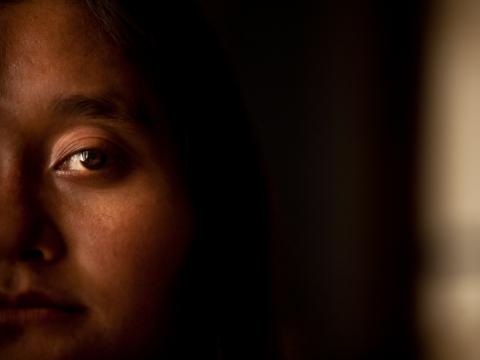World Day Against Trafficking: Why we hide identities

Why can't we show their faces?
That’s what I wanted to know. For as long as I’ve worked on issues related to human trafficking, we’ve hidden identities.
As a former journalist, it’s a hard pill to swallow.
I know that people connect with people. Real names and real faces legitimise information.
Hiding the face and changing the name makes things less credible. That’s what I was taught in journalism school, that’s the practice I took with me into the work world.
But World Vision and other development agencies rarely show faces or give real names when they talk about human trafficking.
My colleague, John Whan Yoon, who heads World Vision’s End Trafficking in Persons program in six countries in Southeast Asia, explained the risks.
“It’s an invasion of privacy – they’ve been through an emotionally excruciating experience. We have to respect their right to confidentiality. There is also risk to their security if they can be identified. Trafficking is a crime, with criminals involved. If their face is shown, they may be in harm’s way,” he said.
Still, I had my doubts. Old habits die hard.
But last year, when I joined a crew to make a film with trafficking survivors in Cambodia and Myanmar, I began to understand.
Each survivor shared a commonality. Each was driven to seek work beyond their country’s borders because they were desperate to improve their life.
They had families that were depending on their financial support– there were young children to feed, aging parents in need of medical care.
They could not find the opportunities in their own countries, and they were promised a golden job.
Now that golden job haunts them.
They endured unspeakable cruelties. They’d been tricked. Beaten. Forced to work until they could barely stand. When they called for help, it was slow to arrive.
Years later, when they returned to the folds of their home, they blamed themselves. They were ashamed. It brought some to tears, others were just angry.
I started to realise that by showing their face, by revealing their name, we could be increasing the shame they already felt. We could be publicly marking them, marking a decision they couldn’t escape.
Of course, there are a few who rejected the offer of anonymity.
Twenty-one-year-old Htut from Myanmar – who was trafficked onto a fishing boat – wanted his face shown.
He wanted people to know it could happen to people like him. He wanted to share his story to warn other young people of the risks.
Htut was an exception. Most trafficking survivors preferred anonymity. They’d been through enough. They didn’t want the yoke of a public presence.
As a storyteller, I need to make sure the people World Vision are trying to help are not further emotionally harmed. I need to be as supportive as possible.
Their stories need to be heard. Their stories are legitimate. Their stories are credible; I don’t need to share what they look like. Their stories help encourage the actions needed to end human trafficking.
* Photos from Khaing Min Htoo, World Vision Myanmar; Jon Warren, World Vision USA in Cambodia